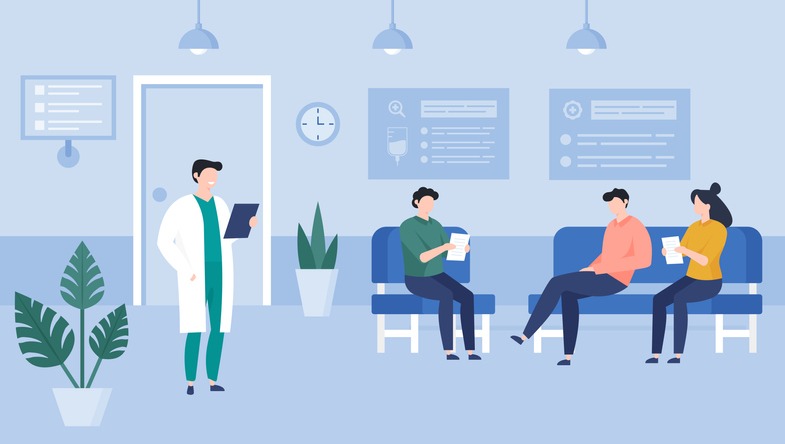
All non-specialist acute trusts must have procured a portal solution by September – in light of NHS England’s mandate, here’s how to roll out a portal that delivers huge benefits for patients and staff
CREDIT: This is an edited version of an article that originally appeared on Digital Health
We continue to face a significant challenge in managing elective backlogs. Wait times increased during the pandemic and there is clearly a risk they may take much longer than we previously anticipated to return to pre-pandemic figures.
But there is also an opportunity to fundamentally change how patients access and engage with services within the NHS. New national expectations set by NHS England, which require all non-specialist acute trusts to establish patient portals in 2023/24, present a potential turning point for some of the longest-standing challenges facing the NHS.
Empowering patients
At Chelsea and Westminster Hospital NHS Foundation Trust, they’ve been working to develop their patient portal technology with DrDoctor – and they now have a mature solution in place that brings significant benefits to patients, staff, and the overall patient journey.
They started to see the real power of portal technology when they concluded a pilot in their pendoscopy department. They sent out pre-assessment questionnaires for patients to complete ahead of their hospital visit, which ended up saving around four hours a day for endoscopy staff and led to a substantial reduction in missed appointments.
Since then, They’ve expanded the use of their patient portal across the entire trust, where it’s being used for the management of digital letters, appointments, patient-initiated follow-up (PIFU) requests, questionnaires and more.
The results speak for themselves: by giving patients the option to play a more active role in their care through our portal, their productivity has the potential to increase. Two in three patients are choosing to complete their endoscopy pre-assessment online, while between 70% and 75% of patients have embraced digital letters, including nearly half of patients over the age of 90.
Clearly, patients across all age groups are ready and willing to adopt new technologies for a better healthcare experience. Their patient portal has allowed them to reach patients faster by empowering them to engage with us through a single digital channel; and by giving patients the option to play a more active role in their care, staff can spend their time more productively.
Cutting the backlog
The functionality offered by the portal also means they are successfully delivering on NHS England’s new expectations for patient portal technology.
The requirements for trusts expect portals to improve waitlist validation, reduce DNAs, streamline perioperative and postoperative processes, and increase PIFU rates. At Chelsea and Westminster, they’ve been effectively validating waitlists with their portal technology since 2018, putting them comfortably ahead of the curve of the national targets for 2023/24.
By being able to quickly contact patients and identify those who no longer need to be seen by them, they have been able to reduce their backlogs and ensure that patients who do require care are seen more quickly. At the same time, the easy integration of the technology with other tools within their Care Coordination Solution has enabled them to simplify and automate processes. As a result, they have more engaged patients, more productive and motivated staff, and a more accurate read on service demand, releasing pressure on teams throughout the trust.
From a patient perspective, not having to dial into already incredibly busy phone lines is also a massive benefit – as it is for the staff tasked with managing said lines, which is hugely resource-intensive. And, thanks to the electronic broadcast messaging functionality provided by their portal, they can instantly alert patients to changes to clinics or appointment types, again reducing rates of missed appointments and freeing up capacity for patients with more urgent care needs.
Transforming NHS engagement
Given that all non-specialist acute trusts must have procured a portal solution by September, the onus is on IT and digital teams to prioritise this work. Finding a supplier with demonstrable experience within the NHS is crucial to getting this right, and they have been lucky to have found a partner who shares similar patient-focused objectives to them.
Of course, their success can’t be attributed to a single digital solution: it is the result of a collective and concerted effort by multiple stakeholders working together to support the delivery of better patient care. The implementation of patient portals requires an operationally led, IT enabled approach with a senior responsible officer (SRO) at the helm. If these three conditions are met, trusts should be in a favourable position to accelerate their portal implementation in line with NHS England’s timeline.
Digital-first models of care aren’t just something NHS England is pushing for: patients want them, too. The expansion of patient portals presents an opportunity for NHS trusts to make significant improvements to pathways and transform the way people engage with NHS services.
DrDoctor’s portal will be rolled out across Northwest London ICS over the next two years. Working in a digital-first way will improve wait times and cut missed appointments, as well as bring significant time-savings to overstretched staff.


Be the first to comment